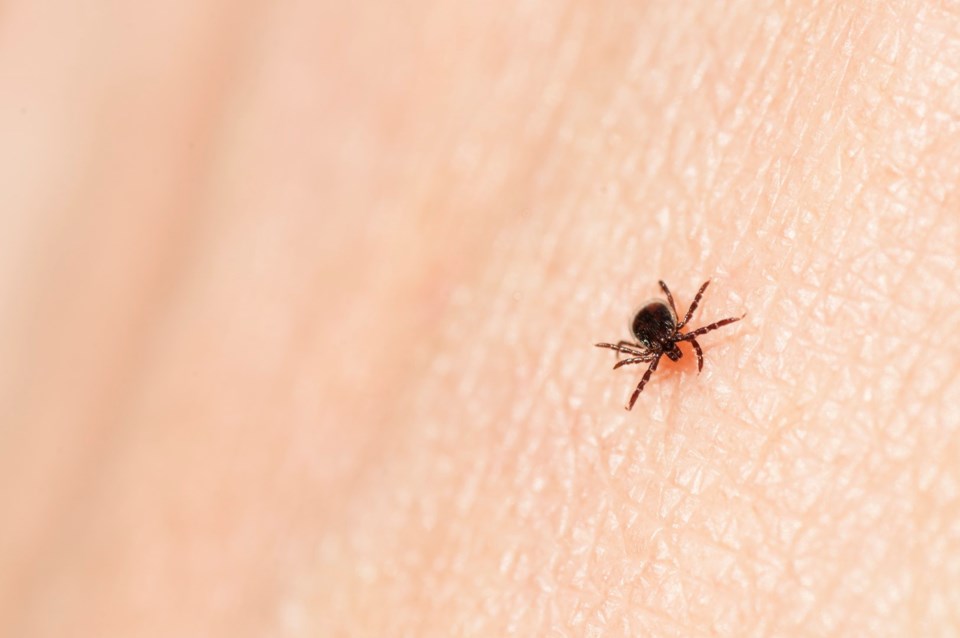REGINA — The Ministry of Health is reminding Saskatchewan residents to remain vigilant for ticks on themselves and their pets this fall.
While blacklegged ticks (lxodes scapularis) are rare in Saskatchewan, they remain active throughout fall. Blacklegged ticks are found in tall grass, brush or wooded areas. In this province, any ticks found in the fall are likely to be blacklegged ticks, which can cause Lyme disease.
Precautionary measures include:
- Wear light-coloured clothes so ticks can be seen easily;
- Wear pants, long-sleeved shirts and shoes that do not expose feet;
- Pull socks over pant legs to prevent ticks from crawling up legs;
- Use insect repellents that contain DEET or Icaridin. Apply repellent to clothes as well as skin. Always read and follow the directions;
- In Canada, clothing that has been treated with the insecticide permethrin has been approved for use by people over the age of 16;
- Shower or bathe as soon as possible after being outside to wash off loose ticks and inspect for attached ticks; and
- Do full body tick checks after being outside on yourself, your children and your pets.
If you find a tick attached to your skin or on your pet:
- Carefully remove it with fine-tipped tweezers and grasp the mouth parts of the tick as close to the skin as possible;
- Pull slowly upward and out with a firm steady pressure;
- Be careful not to squeeze, crush or puncture the body after removal as it may contain infectious fluids;
- Do not put Vaseline, gasoline or other noxious substances on an attached tick which may cause it to regurgitate;
- Submit photos of your tick using eTick (www.etick.ca), Saskatchewan's image-based tick identification system; and
- Hang onto your tick in case it is requested for further testing. Ticks can be euthanized by placing it in a bag and storing it in the freezer for 24 hours.
Between Jan. 1 and Aug, 31, 2022, eTick received 1,063 valid tick submissions. Of these, 11 were identified as blacklegged ticks. Most ticks found in Saskatchewan are American dog ticks (Dermacentor sp.). This species is active from mid-April to the end of July and is not capable of transmitting Lyme disease to people.
For more information on ticks and Lyme disease, including how to submit a tick for Lyme disease testing, visit saskatchewan.ca/lyme or https://research-groups.usask.ca/ticks/#Passivesurveillance.




